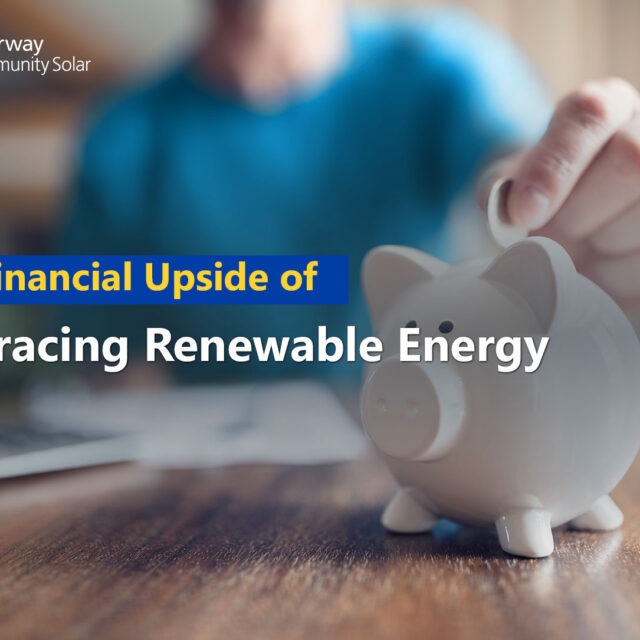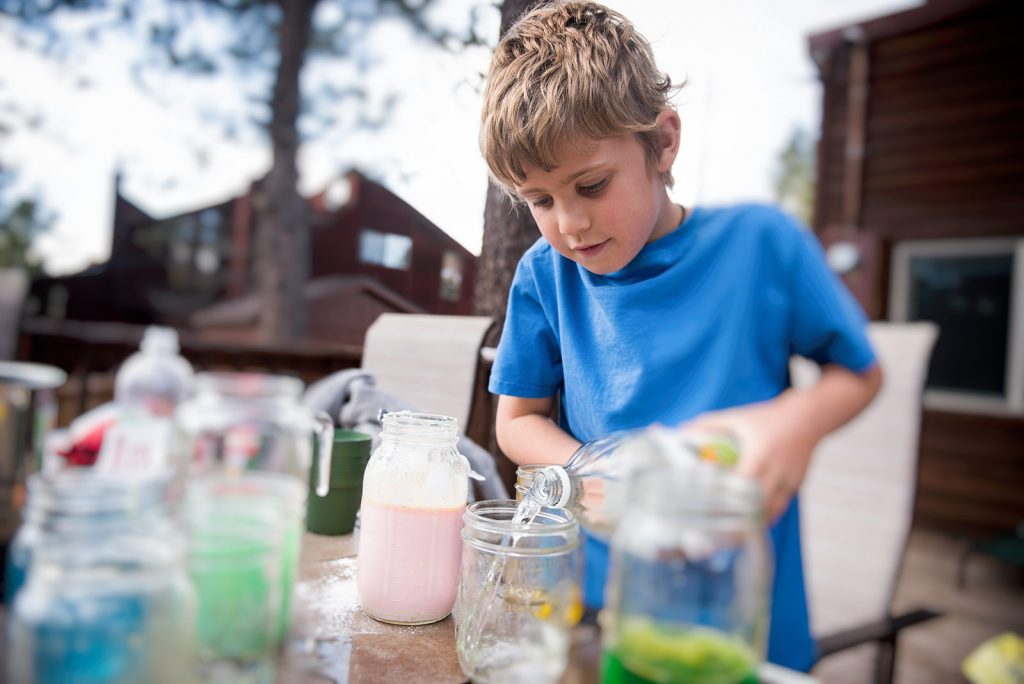
Parental Note: This experiment is designed for children age 11 and older. Parental help may be needed for the cutting and pureeing of food items. Assistance may also be needed to weigh out the appropriate pureed food for each plastic bottle.
Experiment Overview:
The Science Center: Science Experiments for Kids
Often, when we think of a renewable energy source, the first thing that comes to mind is the sun, the wind, or even water. But did you know that some of the garbage from your kitchen trash has the potential to create energy? It’s true! Decaying food waste can become a source of renewable power. When organic matter (plant and animal residue) begins to break down or rot, two gases are created: carbon dioxide and methane. These gases are called biogas and are a renewable energy source.
Let’s track the biogas created by bananas, lettuce, onions, orange peels, and blueberries. We will essentially allow these food items to decompose over one week, and then collect the biogas in a controlled environment: a plastic water bottle and balloon.
Before you begin, make a few predictions:
- Which food do you think will create the most biogas?
- What will happen to the organic matter (food waste) in this experiment throughout the week?
- What do you think is going to happen in our plastic water bottle and balloon environment?
Biogas Experiment
Experiment Materials:
- Basic Kitchen Scale
- (5) Empty plastic bottles (min. 8oz each)
- (5) Small Bowls
- (5) Balloons
- (1) Roll Duct or Packing Tape
- (1) Marker
- (1) Pouring Funnel (min. 6” x 5”)
- (1) Small Blender or Food processor
- (1/2 cup) Blueberries
- (1 cup) Chopped Lettuce
- (1/2 cup) Chopped Onion
- (1/2) cup Banana
- (1/2 cup) Orange Peels
- (1 cup) Water
Experiment Process:
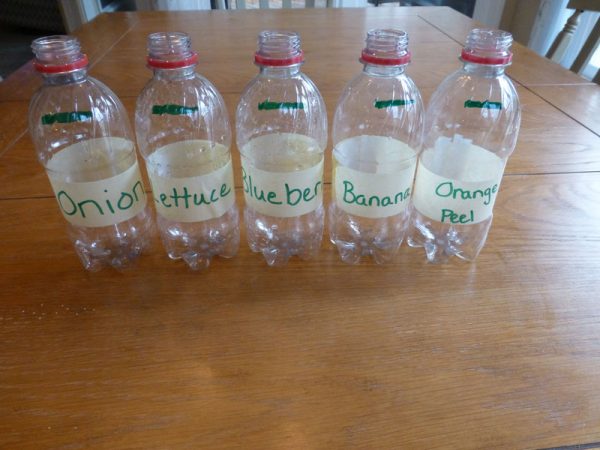
Step 1
Prepare your bottles for the pureed food waste. Take your empty plastic bottles, making sure they have been washed out, and label each one according to your food items. Also, on each bottle, mark a water line ¾ of the way up the bottle. Be as consistent as possible for the water line.
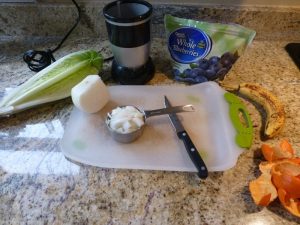
Step 2
Gather all of your food waste/organic matter be pureed separately in a blender. To do this, measure out each food item and place them in a bowl. You will need to cut some of the food items, so ask a parent for help with this step.
- measure out ½ cup of blueberries
- finely cut 1 cup of lettuce
- finely chop ½ cup of onion
- cut ½ cup worth of bananas
- ½ a cup of orange peels
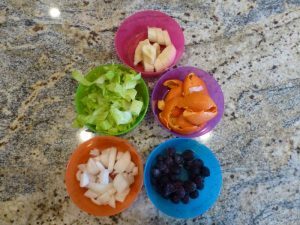
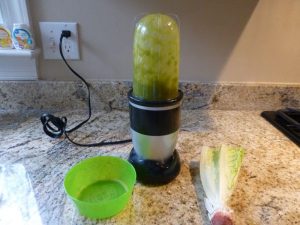
Step 3
Puree each of the food items separately in the blender or food processor, and place the pureed food back into their original bowels (you may need to add water to your organic matter during the pureeing process). Note- make sure you clean out your blender after each food item. We don’t want our organic matter to get all mixed together. You may need some help from a parent on this step as well!
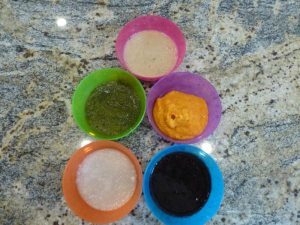
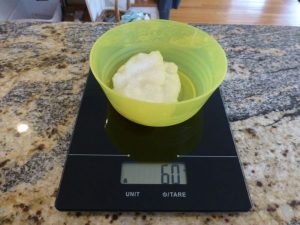
Step 4
Here comes the tricky part! Weigh out each of your food items so that they are all the same weight in each bottle. For example, if you place 60 grams of onion into your first bottle, you must be consistent and do the same weight for each of the other food items (or as close as possible).
- Note: depending on the scale you use for this experiment, you will either need to account for the weight of the bowl or zero out your scale after you place the bowl on the scale.
- Refer to the picture below – we placed the bowl on the scale and then “zeroed” it out. So, when you see the 60 grams, it is referring to 60 grams of organic matter, not 60 grams for both the food waster and bowl.
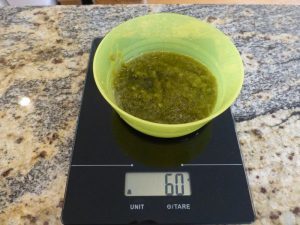
Do this for each food item and place it into the correct correlating bottle that you labeled in step 1 and fill each bottle with water up to the water line. You may need a funnel to complete this step.
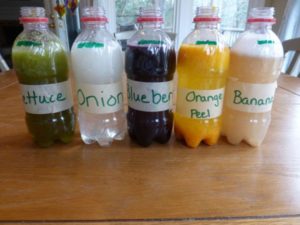
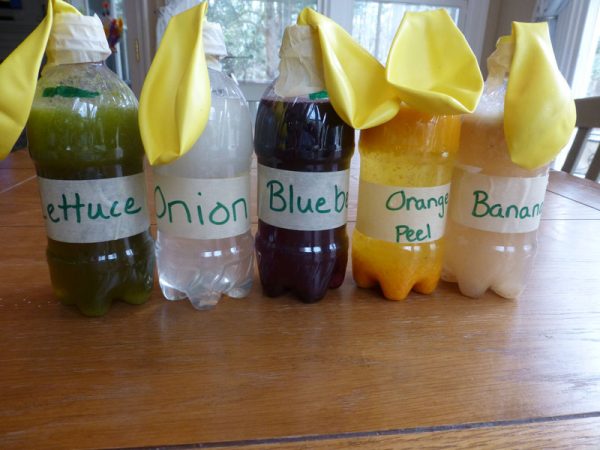
Step 5
Place a balloon on the top of each bottle and secure it with tape to make sure that no oxygen gets into the bottle.
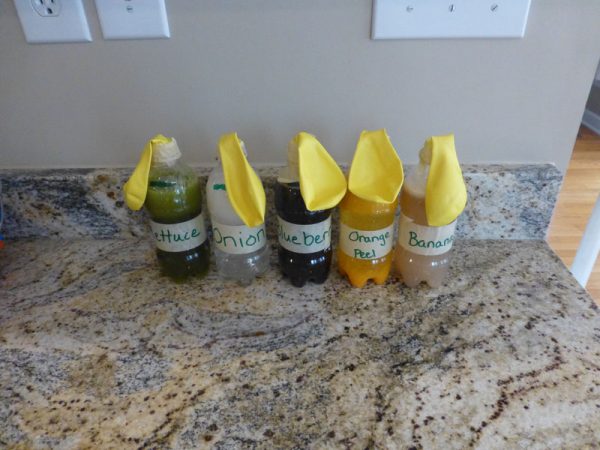
Step 6
Place all of the bottles in the same place and observe for the next week. When you are tracking the balloons over the next week, think about these questions daily.
- What did you notice today about the bottles?
- What did you notice about the balloons and food waste?
- What do you think is happening inside the plastic bottles? The balloons?
Results
Day 2
By the end of day 2, you may be able to see the decaying process in the lettuce and banana bottles. As you can see in the picture below, the lettuce balloon is completely filled with biogas, while the banana balloon is halfway full.
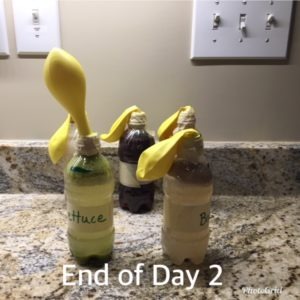
Day 4
By day 4, a few things may have occurred with the decaying food matter. In our experiment, the lettuce and banana balloons have slightly deflated over the span of two days. When you squeeze the balloon, you can still feel the biogas, but the amount is less; this may have occurred because our plastic bottle and balloon system was not completely airtight. Also, the blueberry container has started to fill with biogas, while the onion and orange peels are still working their biogas magic!
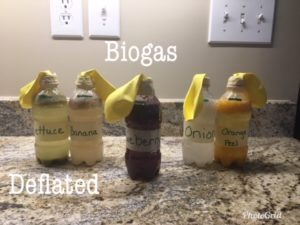
Day 6
By day 6, lettuce, banana, and blueberry may have all produced a level of biogas. The onion and orange peels may have produced no biogas during the week observation period.
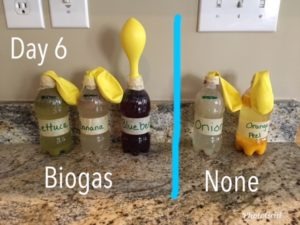
At the conclusion of the week, it seems that the lettuce, banana, and blueberries all produced some level of biogas. The onions and orange peels may still be in the process of decaying, or they are organic food items that do not produce a large amount of biogas. Let’s think back to our prediction questions: were you able to correctly predict the organic food items that produced the most biogas? Did you make accurate predictions on what would happen to the food waste and the balloons?
Conclusions:
In this experiment, we created a biogas digester or simply referred to, a “digester.” A “digester” is an airtight container that depletes organic matter of oxygen which allows bacteria to feed and create biogas. The whole process is called anaerobic digestion because the bacteria found within the digester thrive in an environment with no oxygen and decompose the organic matter. Essentially, the breakdown of our banana, lettuce, onion, orange peel, and blueberries, in the airtight environment, along with the help from our bacteria, is what created the methane and carbon dioxide…also known as biogas!
A digester must also have another container to hold the biogas created by the decaying organic matter; this is where the balloon comes into the play. The balloon was a containment area for the methane and carbon dioxide (biogas) so that it could be utilized later as a form of energy. In our experiment, we chose not to use this biogas as an energy source. Biogas can be used to light homes, run cars, and cook food, to name just a few examples.
Study Questions
- What is a biogas?
- How is biogas created?
- How do we utilize biogas in the real world?
Extension:
Variations to Experiment
- Use other organic food items found in your kitchen to complete the experiment
- Try altering the environment of the digester (warm outside climate, cool inside climate)
- Try varying the amount of food waste/pureed food matter in each bottle. Double or triple the amount


